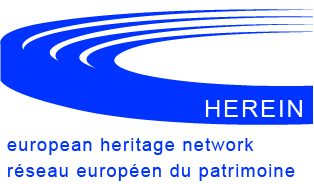
 CULTURAL HERITAGE POLICY
CULTURAL HERITAGE POLICY
The main aim of the Cultural Heritage Act no 80/2012, is to promote the protection of Iceland’s cultural heritage and to ensure, as far as possible, the preservation of cultural heritage in its own environment, increase access to and awareness of the nation's cultural heritage and facilitate research.
All manmade heritage in Iceland (buildings and archaeological sites) of 100 years or older is protected by law. It is estimated that around 4000 buildings and 200.000 archaeological remains fall into that category. 2818 buildings and approx. 60.000 archaeological remains had been registered by 2018. The Cultural Heritage Agency has been developing a web based interactive map with information on all protected buildings and sites in Iceland. At the moment, only a part of the registered archaeological sites and scheduled buildings are shown but, in the near future, information on all registered heritage sites will be found there and available to the public as well as archaeologists, developers and other interested parties.
In addition to the automatic protection of cultural heritage that has reached the age of 100 years, heritage authorities have the option of scheduling buildings and listing sites or areas considered of extraordinary importance. In 2018, the total number of scheduled buildings was 531. The number of listed archaeological in Iceland is 855.
 INSTITUTIONAL FRAMEWORK
INSTITUTIONAL FRAMEWORK
The Cultural Heritage Agency of Iceland is responsible for the management of all archaeological and architectural monuments and sites in Iceland. The agency is within the remit of Ministry of Education, Science and Culture.
The Cultural Heritage Agency is also responsible for the enforcement of the Act on the return of cultural goods to other countries, which deals with the return of illegally obtained cultural goods.
All archaeological finds belong to the state, according to law, and are supposed to be delivered to the National Museum of Iceland, for conservation and keeping.
 LEGAL FRAMEWORK
LEGAL FRAMEWORK
- Cultural Heritage act no 80/2012 (only in icelandic)
- Act on the return of cultural goods to other countries no. 57/2011 (only in icelandic)
- Law on the National Museum of Iceland (only in icelandic)
 RATIFIED INTERNATIONAL CONVENTIONS
RATIFIED INTERNATIONAL CONVENTIONS
Iceland has signed and/or ratified the following conventions on cultural heritage:
- UNESCO Convention Concerning the Protection of the World Cultural and Natural Heritage, ratified 19. December 1995.
- UNESCO Convention on the Means of Prohibiting and Preventing the Illicit Import, Export and Transfer of Ownership of Cultural Property, ratified 9. November 2004.
- UNESCO Convention for the Safeguarding of the Intangible Cultural Heritage: European Convention on the Protection of the Archaeological Heritage (Iceland ratified (19. September 1989) the earlier convention text from 1969, has not signed the revised convention, the Valletta Convention, from 1992):
- European Landscape Convention, signed 29. June 2012.



 Iceland
Iceland